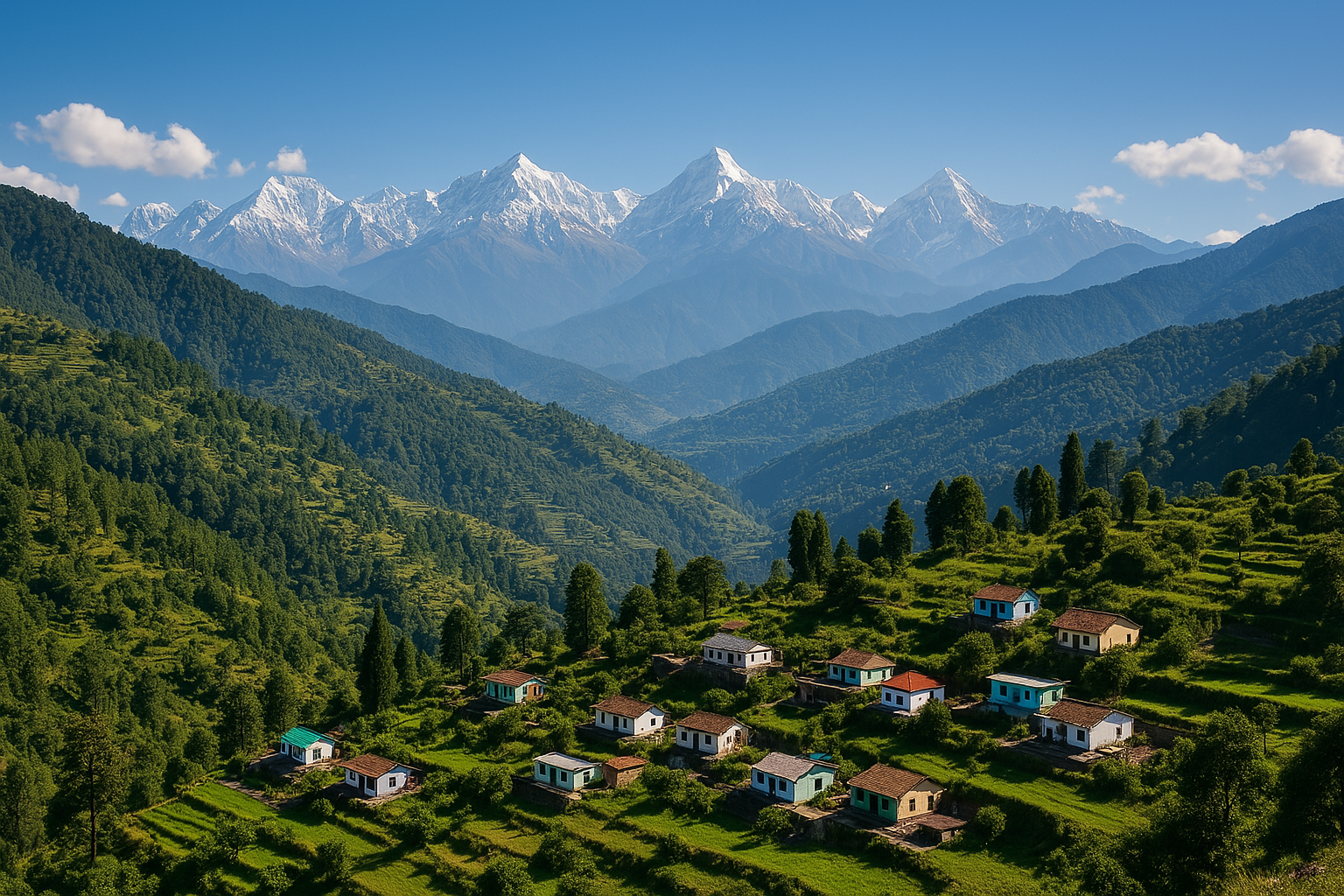The northern Indian state of Uttarakhand, also referred to as the “Land of the Gods,” is tucked away in the foothills of the Himalayas and combines spiritual significance, cultural diversity, and natural beauty. With Himachal Pradesh and Uttar Pradesh as its western and southern neighbors, it occupies an area of roughly 53,483 square kilometers and shares borders with Tibet to the north and Nepal to the east. Its varied terrain, which consists of expansive plains, verdant valleys, and snow-capped summits, makes it a paradise for adventurers and nature enthusiasts.
Garhwal and Kumaon are the two regions that make up the state. Garhwal is home to holy places like Rishikesh, a world-renowned yoga capital and adventure destination that offers white-water rafting, and Haridwar, where the Ganges flows down from the Himalayas. Kumaon is home to tranquil hill towns like Almora, which is renowned for its cultural legacy, and Nainital, which has an emerald lake. The Char Dham pilgrimage, which includes Yamunotri, Gangotri, Kedarnath, and Badrinath, highlights Uttarakhand’s spiritual heritage and attracts millions of people seeking heavenly benefits amidst stunning scenery.
The ecology of Uttarakhand is equally impressive. With its abundance of Bengal tigers, leopards, and a wide variety of vegetation, it is home to Jim Corbett National Park, India’s oldest tiger reserve. Vibrant alpine flowers blossom in the Valley of Flowers, a UNESCO World Heritage Site, and rare Himalayan animals can be seen at Nanda Devi National Park. Despite ongoing issues like deforestation and climate change, these protected areas demonstrate the state’s dedication to conservation.
Uttarakhand’s rich traditions are a main source of cultural vitality. Haridwar’s Kumbh Mela and Kumaoni Holi are two festivals that showcase its profound spirituality. Local identity is celebrated through folk dances like Garhwali Chholiya and Kumaoni Jhora, which are accompanied by heartfelt music. Simple yet tasty, the food includes dishes like Mandua ki Roti, Bhatt ki Churkani, and Aloo ke Gutke, which are frequently prepared using regional grains such finger millet.
The state’s economy is driven by tourism, agriculture, and hydropower. Crops including rice, wheat, and lentils are produced by terraced farming, while apples and litchis thrive at higher elevations. Traditional lifestyles are in danger, nevertheless, due to issues like migration from rural hills to metropolitan lowlands. The capital, Dehradun, is a center for administration and education that strikes a balance between modernization and tradition.
The symphony of opposites between the sacred and the wild, the serene and the exciting, is what makes Uttarakhand so alluring. It has something for everyone, from trekking routes like Roopkund and Hemkund Sahib to meditation retreats. However, sustainable development is still essential to protecting its unspoiled splendor for coming generations.




